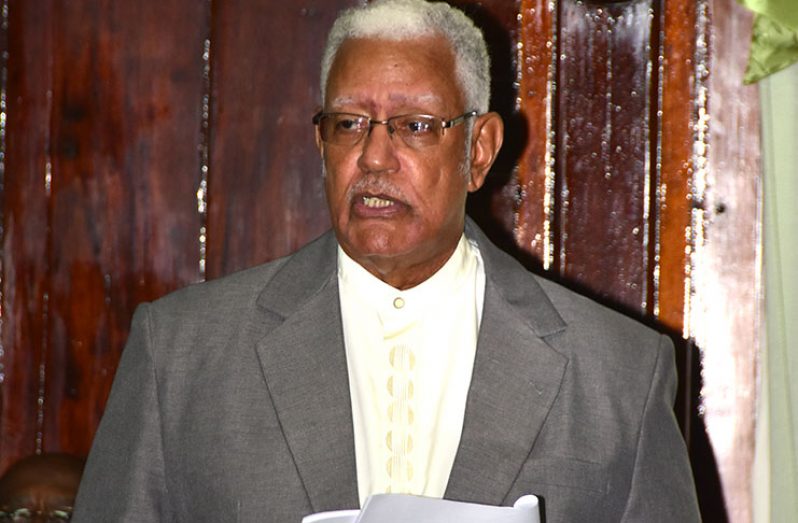THE AUTHORITIES will, in 2017, partner with local bakeries to integrate the use of cassava flour in the baking of starch products, such as bread and pastries.According to the Food Safety Network, cassava flour is considered an ideal source of carbohydrates, ranking closely behind sugar cane in this regard. Globally, mainly on the Asian sub-continent, the staple is utilised in most households, as opposed to wheaten flour.
Mild and neutral in flavour, and not grainy or gritty in texture, cassava flour, with its soft and powdery texture, can be matched on a 1:1 ratio with wheaten flour in many recipes, making it a preferred flour for gluten-free, grain-free baking and cooking, according to reports from studies conducted in Asia.
Agriculture Minister Noel Holder has revealed that, in 2017, a cassava flour processing facility will be established and become operational at Parika on the East Bank of Essequibo. He told the National Assembly during his 2017 Budget Debate presentation last week that cassava processing is rare, with limited value addition undertaken in Guyana. The staple is cultivated in most regions, especially in hinterland areas, but its by-products are currently not exported.
“The result is depressed prices due to a glut in the market,” Holder said, adding that, in the coming year, the Agriculture Ministry will undertake to establish and make operational at least one processing facility to produce high quality cassava flour. This, he said, will effectively reduce Guyana’s high import bill for wheat, which currently stands at US$21M.
Holder said the touted initiative to partner with the bakeries to incorporate cassava flour in baked products would bring several benefits.
These include a reduction in post-harvest losses, the creation of market opportunities for fresh produce, and gainful employment with associated foreign exchange savings through a reduction in wheat imports.
This root tuber is considered an essential source of carbohydrates, he said, and its composition shows a 60–65 per cent moisture content, a 20–31 per cent carbohydrate content, 1–2 per cent crude protein content, and a comparatively low content of vitamins and minerals.
The Inter-American Development Bank (IDB) will, in 2017, support the Government in its hinterland agricultural development drive — initiatives which Minister Holder said will continue to be an important facet on the Government’s agriculture development agenda.
He said that emphasis was this year placed on finalising plans for expansion of the agriculture station at Ebini in the Berbice River and establishment of a new station at Pirara in Region Nine; and work will continue in 2017 to make the two agricultural stations become a reality.
“Emphasis will be placed on cassava, peanut and orchard crops, and cattle at Ebini; whilst at Pirara the focus would be on cattle, rice, orchard crops and cassava,” the minister added, as he revealed that projects will receive the support of the IDB.
He reported to the House that orchard production was increased at Ebini in 2016.
At Hosororo, in the North West District of Region One, a farm has been created to test and produce planting material for the cultivation of turmeric, black pepper, avocado and citrus, he revealed.
He said the intention is to ensure that the nation becomes self-sufficient in spices within the next three years. “Our farmers, especially in Region One, would be the beneficiaries of these interventions. We currently import over US$1 million in spices for the processing sector,” Holder added.



.png)









